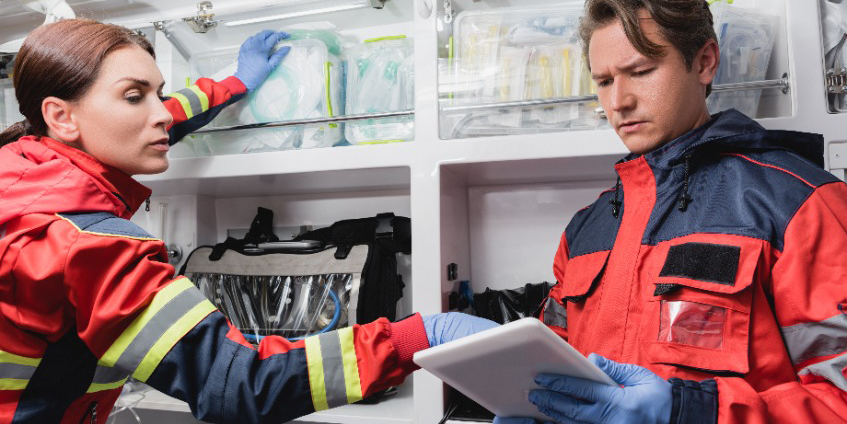
As another year ends and a new one begins, there are lots of boxes to check to make sure your team is ready to take on 2023’s challenges. For EMS providers, one of the most important end-of-year items — and something that should be done much more frequently than once a year — is conducting a thorough audit of your department’s supplies and equipment inventory.
Especially if you make note to perform this task as your fiscal year nears its end — some do in December, while others do earlier in the year — taking inventory of supplies, equipment and medicine is helpful if your team has budget left over and is able to stock up on new items for the months ahead. This process will also allow you to embark on the new year much more organized and ready to address all patient needs as they arise.
To help you optimize your daily work experience and patient care in 2023, we’re sharing some valuable tips to implement when refreshing your team’s airway management inventory.
Conducting an audit
There are many processes your team should be following to take inventory of supplies on a monthly, weekly and even daily basis. Daily ambulance checkouts, weekly inventories and monthly drug checkouts are standard practices for ensuring your equipment is clean and ready for service, and that all drugs are up to date.
It may seem overwhelming at first, but conducting an audit is a critical way to prepare for the year ahead and will leave you and your team better equipped to deal with a diverse range of patient scenarios, needs and environments.
A list of what your team should have in your unit/ambulance includes:
- Oxygen
- Oxygen masks/nasal cannulas
- Bandaging/splinting supplies
- Cardiac monitor/defibrillator
- Backboard/cervical immobilization devices
- IV supplies and fluids
- Medications
- Basic and advanced airway supplies and equipment
- Stretcher and linens
- Specialized pediatric equipment
- Portable suction equipment
- Child safety seats
- Personal protective equipment
- Various other equipment and supplies for a range of possible emergency scenarios
Your auditing process should include taking stock of all equipment on-hand and in the unit and ensuring equipment numbers are consistent with those on record. And remember to document everything.
Updating your inventory
Despite the risk of overwhelming storage spaces and expiring equipment, it’s generally better to have more supplies on hand than fewer, as running low on equipment in EMS can be a critical problem, and providers often can’t swap or substitute supplies during time-sensitive emergencies.
It’s essential that you and your team keep enough supplies at your station, in the ambulance and in your portable kits to address changing needs, shipping delays and backorders. There’s often very little room for extra inventory, though, so stocking the right amount and variety of supplies can be a challenging task — one that takes strategy and practice.
If you’re among the personnel tasked with deciding what equipment is placed in the ambulance, there are several factors you must consider during the inventory process:
- The size of the department and number of units needed
- The cost of each unit
- Power needs — either rechargeable or alkaline batteries, or alternative power sources
- The special populations served and their unique needs (adjustable suction pressure, airway size, etc.)
- Durability and portability
- Sizes — larger, more powerful units or smaller units that can easily be stowed in an airway or trauma bag
- Ease of maintenance — disposable parts and accessories for easy cleaning and reducing contaminants
Organization is a crucial part of inventory management, as small supplies like IV needles, glucose test strips and insulin pens can easily disappear if not stored in the proper place. Your team should strive to be as consistent as possible in its communication around the use and organization of supplies. Using labels, logs and charts will help to ensure that every piece of equipment is accounted for and has its own home before and after it’s used.
Optimizing inventory, optimizing patient care
Ensuring your team always has the right variety of devices, supplies and medication on-hand, in the unit and in the ambulance is essential for optimizing patient care and avoiding liabilities.
Well-designed inventory management systems result in greater reliability and accountability when treating patients, stronger feelings of confidence and preparedness during the workday, and reduced potential for liability or mistakes during care.
Read this blog to learn more about what your team should have on its emergency vehicle maintenance checklist.













